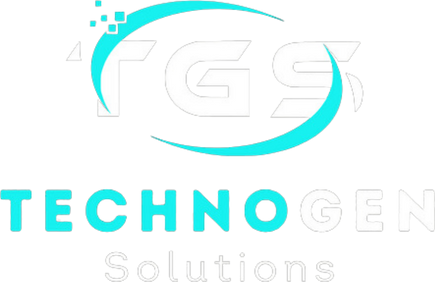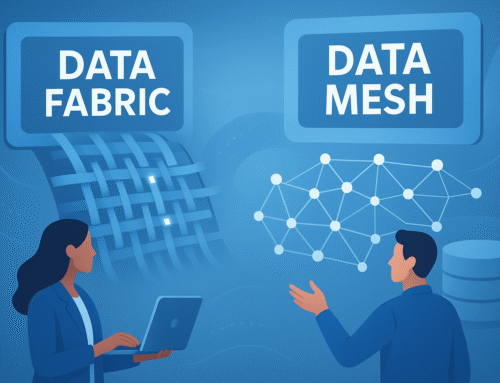The blistering development of autonomous AI and the Internet of Things (IoT) are changing the work of businesses and societies. Our world is becoming smarter and more connected than ever before, with smart homes and connected cars, as well as AI-driven systems used to make decisions. However, as this advancement emerges, there comes a massive challenge; cybersecurity risks.
Cybersecurity in 2025 is not only about the protection of data anymore, but it is about the protection of whole systems of devices, algorithms, and automatic processes. Now is the time to explore how autonomous AI and IoT are transforming the cybersecurity, and what companies need to do to remain safe.
Learning the New Digital Landscape.
Autonomous AI
Autonomous AI is an area of AI where decisions and actions can be made and taken with little or no human interaction. These include:
Self-driving vehicles
AI-powered trading systems
Autonomous drones
Smart manufacturing robots
They create new security risks although they enhance efficiency. When it becomes hacked, an autonomous AI system can be altered in an effort to make harmful or expensive choices.
Internet of Things (IoT)
IoT relates ordinary devices, such as smart refrigerators, wearables, and medical equipment, with the internet. By the year 2025, the number of devices that are going to be connected globally is already projected to reach more than 30 billion by the experts. Any device can be penetrated by the cybercriminals.
The AI and IoT Cybersecurity Problems.
1. Massive Attack Surface
Any device that is connected to another in the IoT system is also a vulnerability. A poor password or a poorly maintained software in a single machine can provide a hacker access to the whole network.
2. Perils of Autonomous Decision-Making.
This is opposed to the traditional systems, which do not act upon commands but make decisions out of its own will. In case a system with an AI is breached, the system may lead to massive system failures that cannot be addressed by human actions.
3. Data Privacy Threats
The IoT devices amass massive personal and commercial data. The attack would result in exposure of sensitive data including health records to financial dealings.
4. AI-Powered Cyberattacks
Also, AI is being used by cybercriminals to carry out more advanced attacks, including deepfake phishing, automated malware, and adaptive hacking methods that are constantly getting updated.
5. Vulnerabilities in Supply Chain.
The production of IoT devices is usually spread all over the world, and it is hard to establish similar security standards. By compromising a supplier, it is possible to put thousands of devices at risk.
Life-World Hazards and Cases.
IoT Breaches in healthcare: Hackers are also targeting connected healthcare gadgets such as insulin pumps and pacemakers endangering lives.
Autonomous Vehicles: Security researchers have shown how to remotely hijack self-driving cars, which are a cause of concern when it comes to safety.
Smart Cities: Country: In case an attack cripples the urban infrastructure, IoT sensors controlling traffic, lighting, and utilities are used to control these activities.
All these examples demonstrate that AI and IoT-based cybersecurity is not a hypothetical concept, but something that is in effect today.
AI and IoT AI/IoT cybersecurity Solutions.
What can businesses and governments do to defend themselves therefore?
- Zero Trust Security Models
One of them is the rule of never trust, always verify. All the devices, users and AI systems should be authenticated before accessing networks.
- AI-Powered Defense Systems
Defenders must also use AI as much as hackers. AI-based cybersecurity tools are able to:
Real-time detection of anomalies.
Predict potential threats
Robotize reactions to cyberattacks.
3. IoT device security standards.
Strict rules to the IoT devices must be enforced by businesses:
Strong password policies
Regular software updates
Protective communication protocols (such as TLS encryptions)
4. Post-Quantum Cryptography
With the development of quantum computing, the conventional encryption processes might become useless. Organizations are to be ready against quantum-safe cybersecurity.
5. Regular Risk Assessments
In order to keep pace with the changing threats, businesses ought to constantly assess weaknesses in both AI and IoT systems.
The Role of Human Oversight
However, in an autonomous AI-driven world, human beings are still critical in cybersecurity:
The moral control makes AI make a decision based on the values of the company.
Incident response teams deal with breaches in a judicious and responsible manner.
Phishing and insider threats are avoided through employee training.
A collaboration between humans and AI is necessary: the former needs to be faster and larger than the former, whereas the latter needs to be strategy and ethic-driven.
Best practices in cybersecurity in business 2025
As a business owner, the following are feasible steps to secure an organization in the era of autonomous AI and IoT:
Secure all sensitive data both in transit and at rest.
Isolate IoT devices and separate them in segment networks as opposed to critical business systems.
Apply multi-factor authentication (MFA) to every device and system.
Make AI governance policies to oversee autonomous decision making.
Train employees to create a cyber-culture.
The use of cybersecurity professionals to conduct frequent penetration testing.
Artificial Intelligence and IoT Future Trends in Cybersecurity.
In the future, we may anticipate a number of key trends:
Self-Healing Systems: The AI-based cybersecurity systems will automatically identify vulnerabilities and remediate them.
IoT Security: Blockchain will provide security levels in exchange of IoT data.
Regulatory Frameworks: Governments will impose tougher regulations on the compliance with the security of IoT and AI.
Privacy-by-Design: A security-oriented design will be integrated into the devices and systems at an initial stage.
Conclusion
With the further development of autonomous AI and IoT reshaping industries, cybersecurity is now more important than ever. These technologies are all interconnected and as such, a single breach can have a ripple effect on a business, city and even a whole nation.
The most helpful solution to the issue in 2025 is the proactive strategy: integrating AI-based security solutions, tough IoT security regulations, and human supervision. Cybersecurity investments in the present day will not only help an organization avoid attacks, but also generate trust, safeguard customers, and future-proof the business in the digital era.
Cybersecurity has ceased to be an IT problem, it is a business survival strategy in the era of autonomous AI and IoT.


Leave A Comment